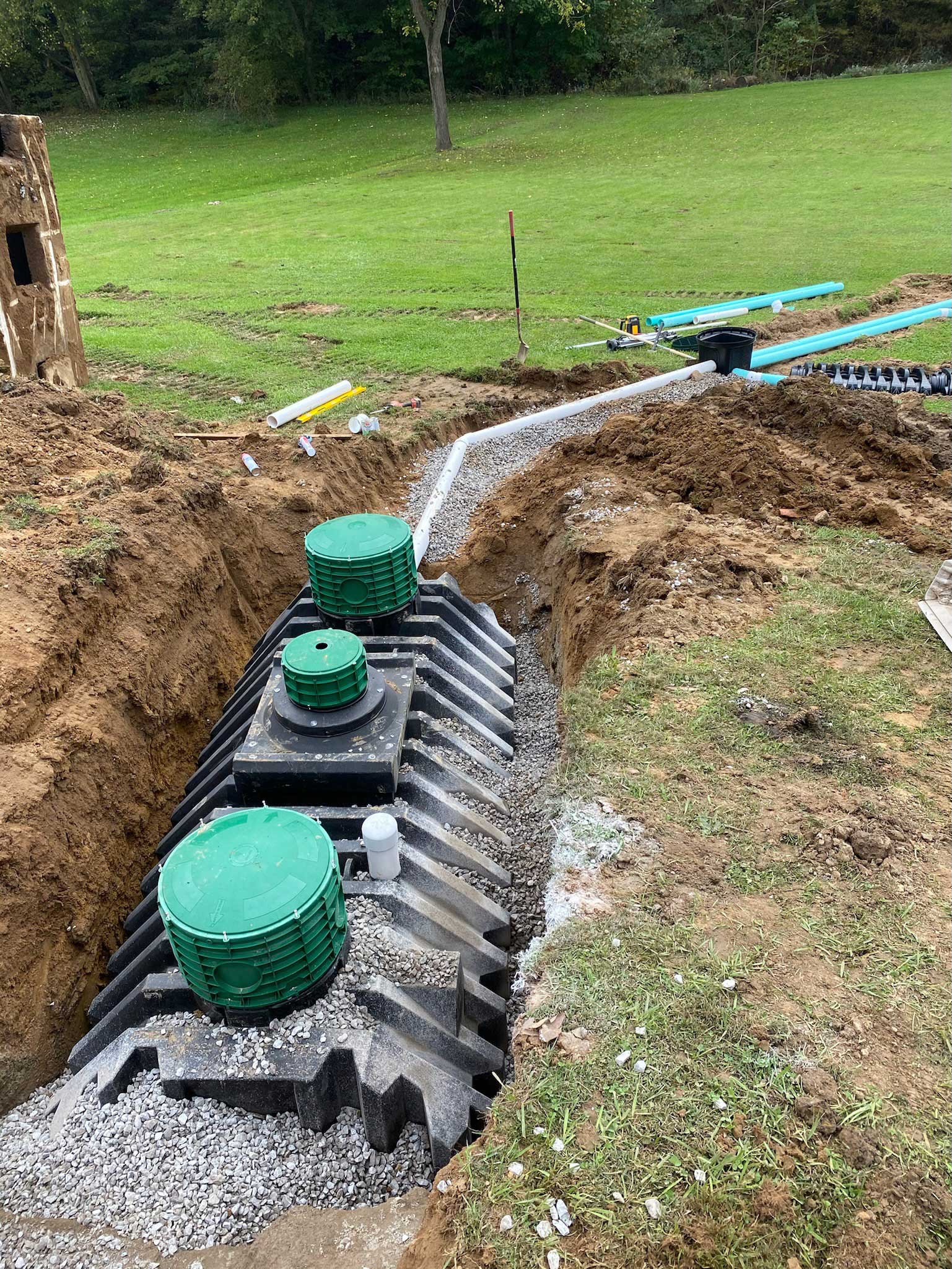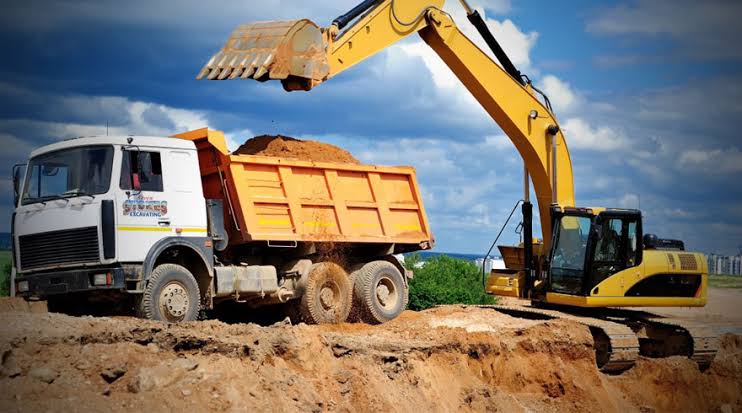Septic Ohio - Comprehensive Septic System Services in Ohio
Septic Ohio - Comprehensive Septic System Services in Ohio
Blog Article
Revealing the Art of Excavation: Pro Tips for Safe and Productive Excavating
In the world of excavation, the mastery of productive and safe excavating is an art form that requires understanding, accuracy, and adherence to established techniques. As soil is turned and planet is moved, the details of excavation expose themselves, demanding an eager understanding of equipment, soil composition, security protocols, and environmental considerations. The expertise required to navigate these components effectively can mean the difference between an effective excavation task and a prospective disaster. By unraveling the layers of this intricate procedure, a world of approaches and understandings waits for those seeking to raise their excavation skills to new heights.
Value of Proper Tools
To ensure the safety and security and effectiveness of any kind of excavation task, utilizing the suitable tools is paramount. Excavation jobs differ in scope and complexity, varying from little property landscape design jobs to large-scale construction tasks.
These flexible equipments come in different sizes to fit various task requirements. Mini excavators are excellent for smaller tasks, while larger excavators deal with a lot more comprehensive jobs efficiently.
Excavators excel in jobs that call for pushing big amounts of soil or debris. By spending in the appropriate devices, excavation tasks can be completed safely, on time, and with accuracy.
Understanding Soil Composition
An extensive understanding of soil structure is basic for executing excavation tasks with accuracy and security. Recognizing the various types of soil is critical as it directly influences excavation methods, equipment option, and general project performance. Soil make-up usually contains 4 major components: sand, silt, clay, and organic matter. Each element has special buildings that affect just how dirt responds to excavation procedures.
Silt fragments are smaller sized than sand however larger than clay, offering modest water drainage and cohesion. Organic issue, such as rotting plant material, influences dirt fertility and stability.
Prior to starting excavation, carrying out soil examinations to identify its composition and characteristics is important. This information aids in choosing the suitable equipment, implementing precaution, and creating excavation techniques tailored to the details soil conditions - lancaster trenching. By recognizing dirt structure, excavation professionals can boost task outcomes while making certain security and adherence to ideal methods
Safety Procedures and Protocols
Comprehending soil structure is the keystone upon which precaution and methods for excavation projects are developed, making sure the well-being of employees and the success of the undertaking. There are numerous key procedures that have to be implemented to reduce threats and protect against accidents. when it comes to security throughout excavation.
Firstly, before any digging begins, a comprehensive examination of the website should be carried out to determine any kind of possible hazards such as underground utilities, unsteady dirt problems, or neighboring frameworks that could position a risk. It is vital to have a skilled person supervise the excavation procedure to make certain that all safety protocols are complied with strictly.
Additionally, all employees entailed in the excavation must be appropriately educated in secure digging methods and the appropriate procedure of tools. Personal protective devices (PPE) such as construction hats, high presence clothing, gloves, and safety boots ought to be used in all times to minimize the risk of injuries. lancaster trenching. Normal safety and security conferences and toolbox talks need to also be conducted to maintain all employees informed about prospective risks and strengthen risk-free work methods. By adhering to these security procedures and procedures, excavation jobs can be completed effectively and without event.
Efficient Excavation Planning
When embarking on an excavation task, careful planning is vital to make certain effectiveness, security, and successful outcomes. Reliable excavation preparation includes several key steps that are crucial for the smooth execution of the project. The initial step is to conduct an extensive site assessment to recognize any type of potential threats, such as underground utilities or unpredictable soil conditions. This details is crucial for developing a detailed excavation strategy that includes safety and security steps and risk reduction methods.
Once the website assessment is total, the following step is to produce a clear timeline and timetable for the excavation activities. This consists of establishing the sequence of tasks, tools requirements, and manpower appropriation. Proper scheduling helps stay clear of hold-ups and makes sure that the project remains on track.

Furthermore, interaction among all group members is extremely important throughout the preparation stage. Clear instructions, normal updates, and effective coordination are important for a successful excavation task. visit site By spending time and initiative in careful preparation, excavation groups can dramatically boost performance, decrease threats, and attain effective results.
Taking Care Of Environmental Considerations
With raising focus on environmental sustainability in construction techniques, taking care of environmental considerations has actually ended up being an important aspect of excavation tasks. Excavation activities have the potential to influence the surrounding atmosphere through dirt erosion, sediment drainage, environment disruption, and contamination of water resources. To alleviate these risks, it is important to execute best techniques that prioritize environmental management.

Furthermore, proper waste administration is crucial to prevent soil and water contamination. Executing procedures for the disposal of hazardous materials, recycling of waste products, and minimizing the usage of harmful chemicals can significantly reduce the ecological influence of excavation jobs. By integrating these methods into excavation preparation and implementation, building and construction business can guarantee that their projects are not only secure and effective however likewise environmentally responsible.
Verdict
Finally, grasping the art of excavation requires a comprehensive understanding of proper tools, dirt make-up, safety measures, and reliable planning. By following these standards and thinking about environmental aspects, excavations can be carried out safely and successfully. It is vital to prioritize safety and security and performance in every digging task to make sure effective results.
As dirt is turned and planet is relocated, the complexities of excavation reveal themselves, requiring go now a keen understanding of tools, see here soil make-up, security methods, and ecological considerations.To ensure the safety and security and effectiveness of any excavation task, using the appropriate tools is critical.A comprehensive grasp of dirt make-up is essential for performing excavation projects with precision and safety and security. Understanding the various kinds of soil is crucial as it directly influences excavation approaches, tools choice, and total project effectiveness. By recognizing dirt composition, excavation experts can boost project results while making sure safety and security and adherence to best methods.
Report this page